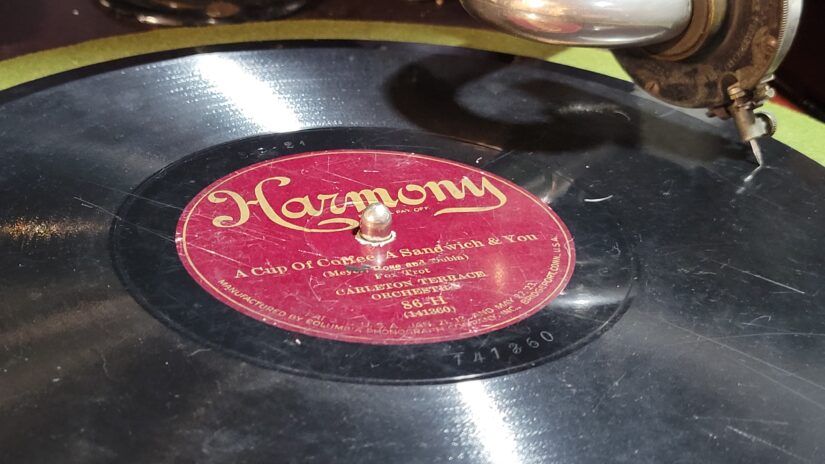Recorded music, and the history of it, reaches as far back to the 19th century. The original “records” were cylinders initially made from tinfoil. Imagine that! The sound quality was horrible and they were very fragile. Before long they tinfoil was replaced by wax; wax cylinders were in use for some time, from roughly 1890 to 1912 before they were ultimately replaced by flat, shellac disc records, the precursor to today’s vinyl records.

These shellac records have their own history behind them, of course, with the first of them produced by Emile Berliner in 1888 and 1889. The 78rpm “standard” was not “introduced” until approximately 1910. Officially, there was no “standard” speed – even the Victor Talking Machine company had records that spun at different speeds – and anywhere between 60 rpm-85 rpm was used. Regardless, today the term “78 rpm” is used rather interchangeably for all records of the era prior to the advent of the 45rpm record.
That said, it might be interesting to note that the 78rpm record was in widespread use right up through the end of the 1950s and, in some areas globally, into the 1960s. There are some Beatle’s records that were pressed onto 78rpm discs for distribution in certain “developing” areas of the world! And though we may not think of it today, in their hey-day, 78rpm records hosted some of the best known entertainers ever.
Iconic singers like Billie Holiday and Frank Sinatra got their start recording on 78s for mass consumption. The format allowed music and musicians to reach fans like never before possible. Radio certainly expanded that access and discovery, but 78s made music a tangible, collectible thing. They helped birth and cement music fandom. Bing Crosby, too, crooned on 78s. Even Elvis Presley had his first recordings on 78s.
What set 78rpm records apart from their contemporary brethen is their authenticity; unlike digital recordings of today, these records were raw, performed in few takes (generally only one) and offer a unique auditory experience. Those musicians did not have the luxury of post-production to “clear up” any imperfections. If a musician was out of tune or played a note incorrectly, that is how it was recorded until the entire song was re-recorded. Literally, practice made perfect.
Perhaps the most significant impact of 78rpm records was during the Jazz Age. Icons like Louis Armstrong and Duke Ellington found their voices immortalized in these grooves. This era, marked by a cultural shift towards more liberal attitudes, found its soundtrack in the jazz records spinning at 78rpm. The music was not just entertainment; it was a statement of freedom, a celebration of improvisation, and a reflection of societal changes.
The widespread use of phonographs and later, jukeboxes, in public places like diners and bars, made music more accessible than ever. 78rpm records played a crucial role in this, providing a diverse array of music to the masses. These records were the playlists of the past, each disc a chapter in the ever-evolving story of popular culture. And during the World Wars, 78rpm records held a special place in the hearts of many. They brought comfort and a sense of normalcy in tumultuous times. Songs of hope, love, and resilience echoed in homes and on the battlefront, with these records serving as a bridge connecting the soldiers with their lives back home.
So while vinyl might claim the audiophile’s heart – and cassette tapes hold a nostalgic place for Gen X – we shouldn’t forget the granddaddy format that started it all. 78s laid the groundwork for the music industry and pop culture landscape we know today. Their crackles and pops transport us back to an iconic era. One earful and you’re doing the jitterbug and feeling the influence that’s still spinning today.
